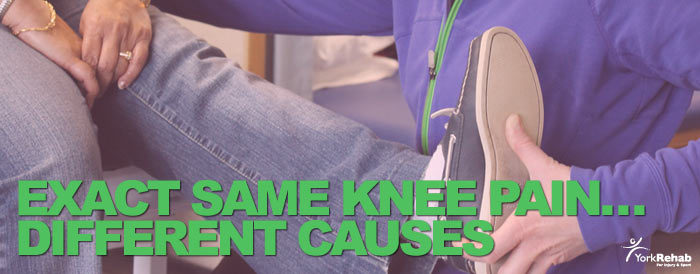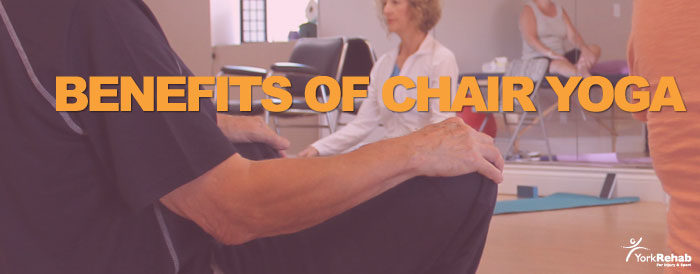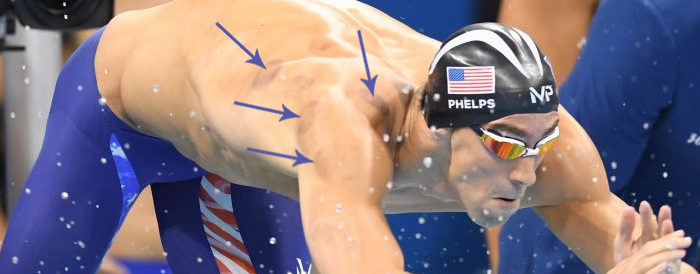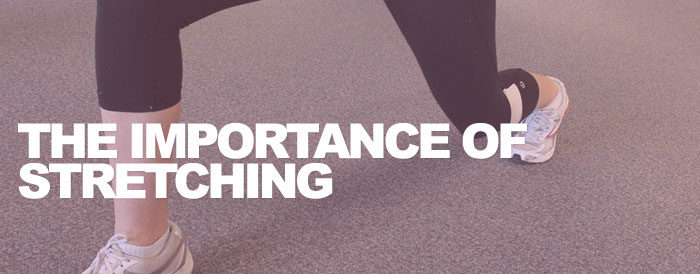Injury & Recovery
Is Chronic Pain something you live with forever? The Answer may surprise you.
Do you have a bum shoulder? A bad knee? Do you have a pain from an injury that has persisted for months or years? You may have talked to friends or co-workers about it and likely heard “Oh that’s chronic pain and it’s something you just live with” or “Well, what do you expect, you’re getting older”. Many people who develop such pains assume that because their injury was a long time ago, their pain is set in stone and there’s nothing you can do about it. Or, as you get older, it will be more difficult to get rid of it. Well, there is hope! These long-lasting pains don’t have to stay around forever; there are several courses of recovery that can take place depending on the nature of the original injury and the natural repair process that has taken place since.
In scenario 1, let’s assume you have pain from an old shoulder injury. It got better initially but just didn’t seem to fully heal, and now you’re left with some lingering pain. Normally what happens during the first few weeks of soft tissue healing (for example with muscle or ligament) is your body deposits scar tissue to rebuild the injured site. If we looked at the tissue fibres under a microscope at this point we would find them disorganized and unlike the original tissue where the fibres are lined up in parallel. If controlled stress (stretching and/or strengthening) is applied to the injured site at this stage, it would begin to remodel and look more like the original tissue. Depending on the severity of the original injury and assuming no other complications, after several more weeks of recovery and exercise the injured site can become pain-free and function well.
However, some people mistakenly believe that a tissue will heal fully on its own with time, or initially they misinterpret the pain that occurs with stressing the injured site and avoid it. In both cases, the remodelling process is not undertaken, and the scar tissue remains disorganized and tight, causing pain every time it is stressed. The good news is if you understand what is happening and are guided through the remodelling process with the assistance of a physiotherapist, you can make changes to this tissue and achieve a gradual recovery over several weeks or months. Typically this will involve an individualized and structured home exercise program – which can involve strengthening and stretching.
In scenario 2, let’s say you find yourself with pain from an old knee injury and no matter how much you try to remodel it following the principles above, the pain doesn’t go away. Sometimes what can happen at the time of injury is the resting position of the joint is disturbed so now it isn’t “hinging” properly anymore. Again, the positive here is this situation can be reversed quickly with the help of a physiotherapist who can identify the right movements to return it to its proper position. It’s like a floor rug being ruffled up in front of a door – when you try to open the door, it gets blocked by the rug. So what you have to do is find the right way to move the rug and then the door will open smoothly again. There are cases where pain that has persisted for years can respond to simple movements rapidly due to this problem.
The bottom line is this: just because you have had pain for months or years from an old injury that seems to be unchanging, it doesn’t mean you’re doomed to live with it. There’s hope! You can simply start by making an appointment with a physiotherapist. They’ll listen to you and do a thorough assessment to determine the nature of the problem, and design a recovery plan for you. Remember, you don’t need a doctor’s referral to book an appointment with a physiotherapist. As long as you’re willing to put in the effort to recover, the results will likely follow. Wouldn’t it be nice to leave behind that nagging pain you thought would be with you for the rest of your life?
Exact Same Knee Pain…Different Causes
When you’re told you need to go see a physiotherapist, what do you think of? You may think of stretching, strengthening, heat/ice, ultrasound, endurance training, balance exercises, or electrical stimulation. All these thoughts fall under the category of treatment. What you may not consider is your physiotherapist as a diagnostician. Therapists who are trained in Mechanical Diagnosis & Therapy, also known as the McKenzie Method, are diagnosticians first and foremost. The three cases presented below illustrate this point – all three patients came in with pain in the front of their knees, but the underlying reason for each pain was different and demanded unique management strategies.
The first patient was a 14-year-old female who had right knee pain episodically for the past 2 years – at the time of assessment she had it for 1 month. It was painful when bending, standing, squatting, lunging, and sometimes when sitting, walking, and negotiating stairs, and prevented her from participating in karate. The history and physical exam indicated it could be a typical knee problem, but in the McKenzie Method the lumbar spine (lower back) is first assessed for any contribution – spinal conditions can refer in unusual ways to the extremity. Ultimately it was found that repetitive lumbar extension brought about relief from her knee pain, which she was easily able to do at home, and after some reconditioning exercises, she made a full return to karate.
The second patient was a 60-year-old male who had pain in both knees for a year after a day of heavy ladder use at work. The pain was there mostly when getting out of a chair and walking the first few steps, and also sometimes with squatting. As with the patient above, his lower back was assessed for any contribution and was ruled out because of no change to his presentation. His knees were then assessed with repetitive movement testing. Repetitive straightening (hyperextension) caused a significant reduction in his squatting pain. Within a week of performing this exercise 4-5 times per day, he was 90% free of pain with full movement and strength.
The third patient was a 39-year-old male who had right knee pain intermittently for 2 years after doing some moving; going up and down stairs and squatting were his two most painful activities. As above, his lumbar spine was assessed first, which had no effect on his presentation, so it was ruled out. Repeated knee movements also had no lasting effect but it was found that repetitive straightening of his knee with an ankle weight consistently produced his pain. This pain did not remain afterward. This presentation is consistent with a dysfunction or suboptimal healing of the patellar tendon. Consistent remodeling of his tendon via progressive resistance exercises over two months proved to steadily diminish his pain. He was able to go up and down stairs without pain at that point and had made a return to biking.
The three cases outlined above all had frontal knee pain, but for different reasons: one was due to a lower back joint problem, one was due to a knee joint problem, and the last was the result of a patellar tendon dysfunction. These diagnoses were sorted out following the principles of the McKenzie Method and each patient was given an effective self-management strategy that led to resolution of the problem. Make sure the next time you need to see a physiotherapist that you are given a good mechanical assessment that focuses on understanding the cause of your problem, and not just what can be done to treat the symptoms.
Our Newmarket Physiotherapy clinic has several physiotherapists trained as McKenzie Method practitioners. Our physio clinic also has 2 of only a handful of therapists in Canada who have completed the Diploma Program in Mechanical Diagnosis and Therapy (MDT) and the most number of credentialed therapists in an Ontario clinic.
Benefits of Chair Yoga
Yoga can be intimidating because there’s a misguided notion that you need an advanced level of strength and flexibility. And although possessing an advanced level of each will make a yoga session easier, a great workout is always achieved because yoga pushes your own limits no matter what your capability. Our Newmarket physiotherapy clinic has a Fitness Studio where we’ve been hosting yoga classes for several years. We think yoga is wonderful for your health, wellness, recovery and spirit. Yoga really is magical. From time to time we host a Chair Yoga session in order to encourage people to come out and experience Yoga – we feel if you try it once, you’ll be hooked.
So why the chair? Here are some benefits of Chair Yoga:
Balance & Support. We want to reduce the intimidation factor in order to get someone to come and experience yoga first hand. The chair adds an element to a person’s confidence knowing that it can be used as a prop to aid with balance and support. Poses that require a one-legged stance are much easier when you have something to hold on to and it allows you to develop competency in the particular position until you are comfortable enough to let go.
Building Strength & Stamina. Many are fooled into thinking that yoga is easy, it’s just a bunch of easy poses while you are sitting or lying down. And while sitting and lying are definitely part of the practice, the deliberate and controlled movement that is required from each pose will often engage muscles not normally used making yoga a great workout. This results in developing greater strength, stamina, flexibility, and balance. And this happens regardless of how good you are at yoga – as long as you challenge YOUR limits you will experience results.
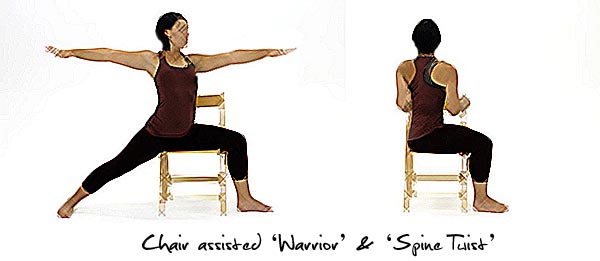
A chair to assist with something like a “spine twist” or a “warrior pose” can safely get you into slightly more challenging poses sooner allowing you to reap the rewards quicker.
Get into Activity Sooner. When recovering from an injury, especially if the injured area is in your lower body, mobility (and confidence) may be limited. A chair provides the support that allows you to begin introducing exercise/activity back into your life. The opportunity to sit while engaging in activity can reduce any discomfort you might feel while standing if you are recovering from an injury.
If you’d like to know when the Fitness Studio at our Newmarket physiotherapy clinic will hold its next chair yoga session give us a call – 289.796.1155.
Cupping Therapy…Fact or Fiction
If you watched swimming during the Rio Olympics you undoubtedly saw at least one of Michael Phelps races and noticed the purple dots. Given Phelps walked away with 5 golds and a silver those purple dots have created quite a buzz. Can these seemingly magical dots make all of us swim like an Olympian or at a very minimum heal us from our aches and pains? Well, the truth is, no one can say for certain what role those dots play in the healing/recovery process since there isn’t a lot of scientific evidence to support the practice. The practice, by the way is called cupping. And magical or not, given the number of wins under Phelps belt in Rio 2016, it would seem as though the dots have helped in some way.
Cupping therapy is a form of alternative medicine that dates back many centuries and can be linked not only to Asian and European practice but also to Egyptian and ancient Greek as well. There are two types of cupping: dry and wet with multiple variations of each type. The basic principle for all types involves the creation of suction, by placing a special cup (varying types depending technique) on the skin to create focused suction in the targeted area. The cup remains in place for several minutes (ranging from 3 – 15mins depending on the practice) while the vacuum creates pressure drawing blood to the region…hence the purple bruising.
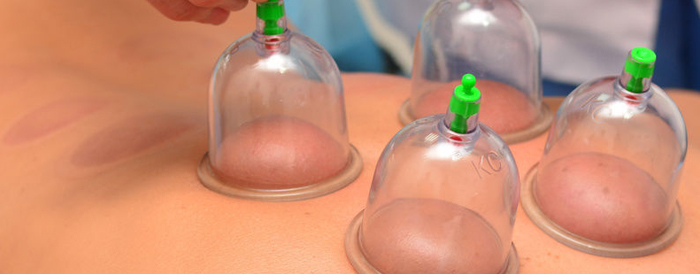
Given its association with such a high profile and successful athlete, cupping will definitely become a treatment option many people will want to explore. However, like any other treatment method, it’s important to understand what you’re getting into.
Regardless of the type of cupping, the therapy method is rooted in the creation of suction. Traditionally, the treatment approach involved using something flammable like alcohol, cloth or paper to create a flame which would then be inserted into the cup to create heat. The flame would then be removed and in a quick fluid motion, the cup would be placed on the patient’s skin. The result, a vacuum would be created as the air inside the cup cools causing the suctioning effect. A more modern and common approach amongst practitioners in the Western world is to use a pump to create the suction. In either case, the suctioning leads to the rising and reddening of the skin as blood flow increases to the area, swelling the blood vessels leading to the skin bruising (i.e. circular marks).
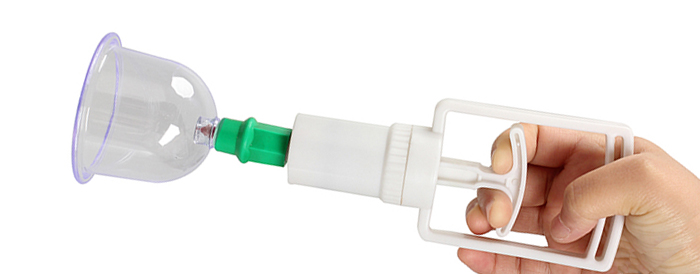
Wet cupping derives its name from the fact that a small amount of bleeding is induced during the process. After the initial placement of the cup to create the suction, it is removed and then very tiny incisions (using a scalpel) are made to the suctioned area. The cup is then placed back onto the same area to induce more suctioning to draw out blood. The reasoning is that this process removes harmful toxins from the area which help support healing.
There’s no medical evidence to support the “drawing out toxins theory”, nor is there much evidence to support the dry treatment approach either. Scientific proof is a bit tricky because it’s difficult to run accurate tests using a control group – creating a placebo effect for suction is not so easy. Basically, you’re either getting suctioned or you’re not…there’s no fooling.
There are cupping advocates that insist that the procedure is undoubtedly useful whether or not scientific proof can be offered. Professionals within the field of medicine will tell you that a patient’s participation is required both physically and psychologically in any healing process. The mind can play a strong role in speeding up recovery so if a patient mentally feels they are getting better their healing process will be faster. So if cupping makes a patient feel better whether slight or significant – then that effect is very real. And likewise, if a world-class athlete believes it helps it becomes an advantage. We all know that at an Olympic level the athletes are all physically well-tuned and capable of winning. Winners are often separated from the rest by their mental capability versus their physical.
Proof or no proof, this type of therapy is very much in practice. And given it has been in use for over 3,000 years it would be a little arrogant of Western medicine to discount its effectiveness just because the practice is not properly understood by western measure. There are also those that say cupping is a risky treatment. In response, it’s important to note is that no treatment is without risk if it’s not delivered by a trained and experienced professional. If you are interested in seeking out cupping as a treatment for your condition, you would be well advised to find an experienced practitioner. You can start by speaking with someone trained in Traditional Chinese Medicine registered with the College of Traditional Chinese Medicine practitioners and Acupuncturists of Ontario (CTCMPAO).
Why Stretching Isn’t Just for the Morning
You have been lifting weights regularly for the last couple months and are beginning to notice more definition. Happy with your progress, you continue to lift and keep getting stronger. Then one day while using the squat press machine, you feel a twinge in your inner thigh. You manage to put the weights back safely but are unable to finish your workout. Wincing in pain you wonder, “What happened?”
Or maybe after a couple years away from swimming you return to the pool. The first couple of laps don’t feel as smooth as they once did. As you continue swimming you notice that your strokes are shorter and your shoulders don’t rotate as easily as they once did. As you towel off you wonder, “What happened?”
Not stretching is likely what happened in these scenarios. Stretching is often an overlooked exercise aspect due to time limitations and because it does not produce visible results. But here are some reasons to not overlook stretching again:
Maintain Flexibility
As we get older, muscles become tighter and our range of motion decreases. Being flexible is beneficial for everyday tasks and regular stretching can help keep the major joints moving freely and maintain mobility. The danger of losing flexibility is reduced mobility – as movements become harder to do, we instinctively do them less which can lead to things like not being able to stoop down, sit cross-legged comfortably, or bending down in a manner that keeps your back safe. Use it or lose it, isn’t just lip service – it’s a sad reality for many. It’s the natural course that many people follow which results in less activity and increased potential for debilitating injury.
Reduce Back Pain
Moving your body freely without limitations means movements are efficient and less painful. Regular stretching can also lead to better posture and reduced lower back pain.
Remain Injury-Free
Every time you lift weights, the muscle is contracting, breaking down and is left in a shortened state. This process leaves muscles feeling sore, tight and at risk for injury. Stretching after lifting weights is essential to reducing the risk of injury, and it can help shorten recovery time.
Improved Muscle Development
Muscles are formed by putting stress, such as resistance or weights, on them while moving through a full range of motion. However, when your range of motion is limited, the development of the muscles is affected. If you want well-developed muscles then make time for stretching.
Now that you know why stretching is important to your routine, be sure to do it correctly. Hold your stretches at the first feeling of resistance. Then breathe for at least a count of ten before releasing. Be sure to modify and adjust stretches to suit your flexibility and range of motion. Stretching is also an activity that can be done as a workout routine. If you’re not sure how, a great way to explore the power of stretching is through Yoga. Find a local studio – you can often get a free intro class (or if participating in a group is too intimidating, find a yoga instructor for a private lesson). You can also YouTube “Yoga for Beginners”. York Rehab also runs a beginner yoga class for those looking to get started.
Not sure which stretches would benefit you the most or how to tailor them to your needs? Consider booking an appointment with one of our physiotherapists who can show you how.


